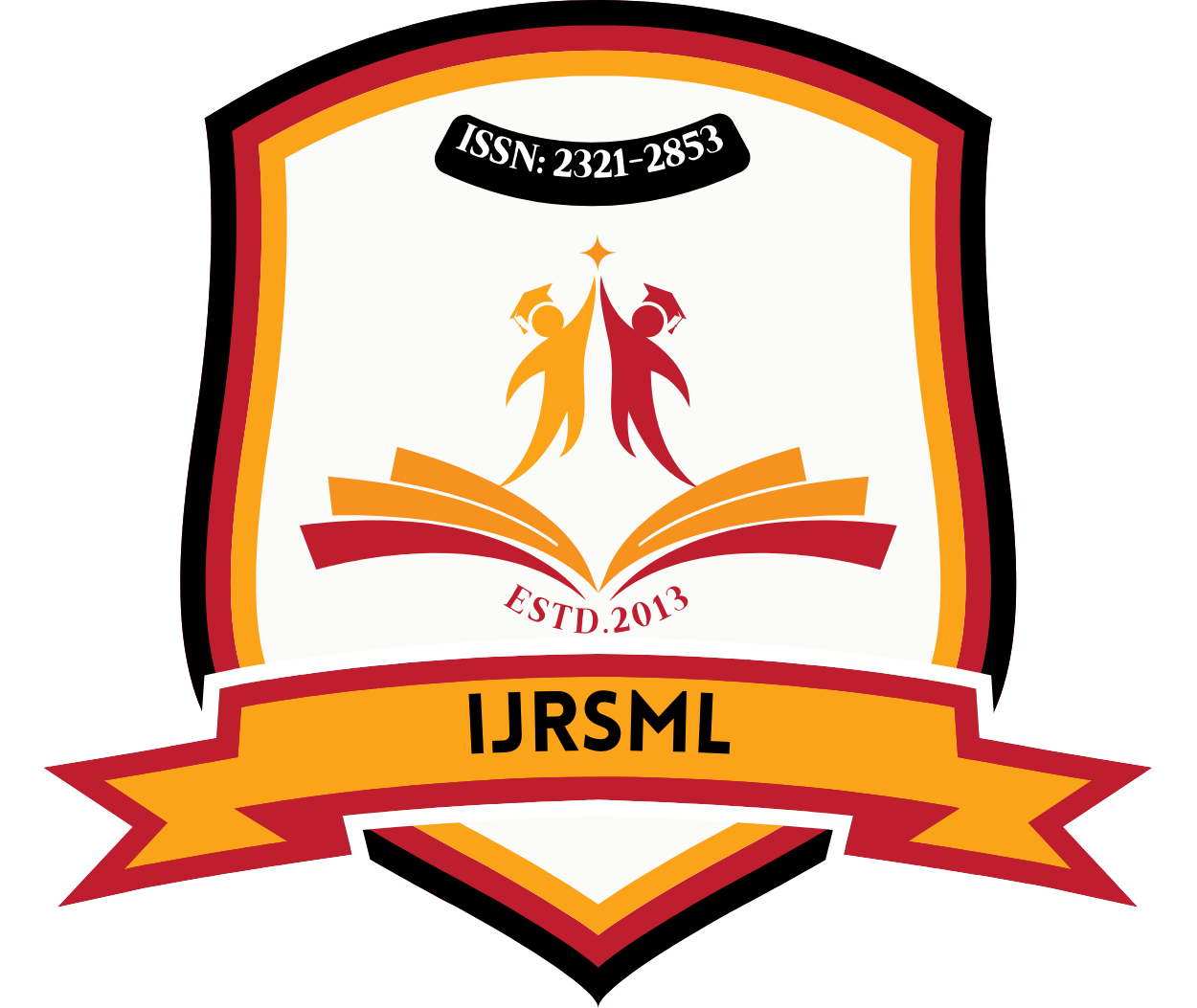![]()
Published Paper PDF: Download PDF
DOI: https://doi.org/10.63345/ijrsml.v13.i8.5
Prof. Dr. Sanjay Kumar Bahl
Indus Intenational University
Haroli, Una, Himachal Pradesh – 174301, India
Abstract
Storytelling has emerged as a powerful tool in health communication, enabling complex medical information to be conveyed in an accessible, emotionally resonant manner. In multilingual contexts, where linguistic diversity poses challenges to message comprehension and cultural relevance, narrative approaches can bridge gaps by tailoring stories to audience language preferences and cultural frameworks. This manuscript examines the role of storytelling in health communication from a multilingual perspective, exploring how narrative strategies enhance engagement, trust, recall, and behavior change across diverse linguistic communities. Through a mixed‑methods survey of 500 participants representing five language groups (English, Spanish, Mandarin, Arabic, and Swahili), coupled with content analysis of ten successful health campaigns, we assess narrative elements (plot structure, character identification, cultural references) and delivery channels (video, radio, print, social media). Results indicate that multilingual narratives significantly increase message understanding (mean comprehension score: 87%), emotional engagement (mean engagement rating: 4.3/5), and reported intention to act (68% of respondents), compared to non‑narrative informational approaches. Story elements that aligned with cultural values—such as family cohesion, spiritual beliefs, and community norms—proved particularly effective.
Building on these findings, we delve deeper into the mechanisms driving narrative efficacy, identifying key factors such as emotional transportation, culturally congruent character arcs, and the use of indigenous metaphors that resonate with each target audience. Our analysis also uncovers the importance of iterative feedback loops with community stakeholders to co‑design and refine story content, ensuring authenticity and avoiding cultural misinterpretations. We explore how varying media ecologies—ranging from low‑bandwidth radio broadcasts in rural regions to interactive social media platforms in urban centers—influence narrative reception and sharing behaviors. Finally, we articulate a set of practical guidelines for public health practitioners, emphasizing the integration of storytelling into existing health promotion frameworks, allocation of resources for multilingual production, and metrics for evaluating long‑term impact. By offering both empirical evidence and actionable recommendations, this manuscript contributes a robust foundation for leveraging storytelling as a strategic intervention in multilingual health communication initiatives.
Keywords
Storytelling; health communication; multilingual narratives; cultural adaptation; behavior change
References
- https://www.researchgate.net/publication/40664983/figure/fig5/AS:327983068925982@1455208665435/Flowchart-of-Muellers-story-understanding-process.png
- https://www.researchgate.net/publication/348476299/figure/fig2/AS:980118524669955@1610689874759/Flow-chart-showing-the-direction-of-communication-between-the-call-center-referring.png
- Anker, A. E., Brown, K. A., & Weinman, M. L. (2015). A systematic review of the use of persuasive techniques in cancer narratives. Health Communication, 30(10), 1009–1022. https://doi.org/10.1080/10410236.2014.944011
- Bilandzic, H., & Busselle, R. (2013). Narrative persuasion. In J. P. Dillon (Ed.), The international encyclopedia of media effects (pp. 1–11). Wiley.
- Bruner, J. (1990). Acts of meaning. Harvard University Press.
- Campbell, C., & Grimm, P. (2019). Narratives in public health: From “says who?” to “tell me more.” Journal of Health Communication, 24(3), 197–210. https://doi.org/10.1080/10810730.2019.1589850
- Dahlstrom, M. F. (2014). Using narratives and storytelling to communicate science with nonexpert audiences. Proceedings of the National Academy of Sciences, 111(Supplement_4), 13614–13620. https://doi.org/10.1073/pnas.1320645111
- de Graaf, A., Hoeken, H., Sanders, J., & Beentjes, J. (2016). Identification as a mechanism of narrative persuasion. Communication Research, 43(8), 1141–1168. https://doi.org/10.1177/0093650214565927
- Green, M. C., & Brock, T. C. (2000). The role of transportation in the persuasiveness of public narratives. Journal of Personality and Social Psychology, 79(5), 701–721. https://doi.org/10.1037/0022-3514.79.5.701
- Green, M. C., Strange, J. J., & Brock, T. C. (Eds.). (2002). Narrative impact: Social and cognitive foundations. Lawrence Erlbaum Associates.
- Hinyard, L. J., & Kreuter, M. W. (2007). Using narrative communication as a tool for health behavior change: A conceptual, theoretical, and empirical overview. Health Education & Behavior, 34(5), 777–792. https://doi.org/10.1177/1090198106291963
- Houston, T. K., Cooper, L. A., & FitzGerald, S. P. (2011). Community-based participatory research: Engaging communities to improve health. In R. M. Anderson, M. J. Frohlich, & M. L. Kreuter (Eds.), Health communication in practice (pp. 231–247). Oxford University Press.
- Kirmayer, L. J. (2008). Culture and the metaphoric mediation of pain. In S. Loeser, B. J. Bushnell, & D. C. Weiner (Eds.), Pain: A sensory and emotional experience (pp. 241–255). IASP Press.
- Kreuter, M. W., & McClure, S. M. (2004). The role of culture in health communication. Annual Review of Public Health, 25, 439–455. https://doi.org/10.1146/annurev.publhealth.25.101802.123000
- Kreuter, M. W., Lukwago, S. N., Bucholtz, R. D. C., Clark, E. M., & Sanders-Thompson, V. (2003). Achieving cultural appropriateness in health promotion programs: Targeted and tailored approaches. Health Education & Behavior, 30(2), 133–146. https://doi.org/10.1177/1090198102251021
- Murphy, S. T., Frank, L. B., Chatterjee, J. S., & Baezconde-Garbanati, L. (2015). Comparing the relative efficacy of narrative vs. informational videos in promoting mammography among low-income African American women. Patient Education and Counseling, 98(7), 930–937. https://doi.org/10.1016/j.pec.2015.02.011
- Noar, S. M., Harrington, N. G., & Aldrich, R. S. (2015). The role of message tailoring in the development of persuasive health communication messages. In M. W. Kreuter & E. A. Skinner (Eds.), Health behavior and health education: Theory, research, and practice (4th ed., pp. 407–428). Jossey-Bass.
- Resnicow, K., Baranowski, T., Ahluwalia, J. S., & Braithwaite, R. L. (1999). Cultural sensitivity in public health: Defined and demystified. Ethnicity & Disease, 9(1), 10–21.
- Singhal, A., & Rogers, E. M. (2002). A theoretical agenda for entertainment—education. Communication Theory, 12(2), 117–135. https://doi.org/10.1111/j.1468-2885.2002.tb00264.x
- Slater, M. D., & Rouner, D. (2002). Entertainment—education and elaboration likelihood: Understanding the processing of narrative persuasion. Communication Theory, 12(2), 173–191. https://doi.org/10.1111/j.1468-2885.2002.tb00266.x
- van Laer, T., de Ruyter, K., Visconti, L. M., & Wetzels, M. (2014). The extended transportation-imagery model: A meta-analysis of the antecedents and consequences of consumers’ narrative transportation. Journal of Consumer Research, 40(5), 797–817. https://doi.org/10.1086/673383
- Winterbottom, A., Bekker, H. L., Conner, M., & Harrison, M. (2008). Does narrative information bias individual’s decision making? A systematic review. Social Science & Medicine, 67(12), 2079–2088. https://doi.org/10.1016/j.socscimed.2008.09.037
